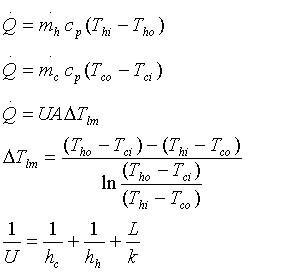 | |||
 | |||
|
|
| Introduction | |
Alison Turner is a department manager at a commercial nuclear generating plant. She is also a member of the Plant Nuclear Safety Review Committee (PNSRC). The committee's responsibilities include reviewing and approving design changes, and submittals to the Nuclear Regulatory Commission (NRC). Today Alison finds herself in a difficult situation. PNSRC is meeting to decide what to do about a heat exchanger problem. Routine testing on the previous morning revealed degraded cooling water flow and high differential pressure in both heat exchangers in the safety system. The most likely cause of the problem is sand accumulation in the filter at the cooling water inlet to the heat exchangers. The two heat exchangers are in parallel, and when operating at full heat transfer capacity, each one individually provides sufficient cooling to safely operate the plant. Two heat exchangers are used in case one of them fails. After extensive analysis by engineers in the mechanical engineering and nuclear safety and licensing departments, they have concluded that the cooling water flow falls 30 percent below the minimum requirement set by the technical specifications under which the plant is licensed. To allow for continued plant operation at the current cooling water flow rate, nuclear safety and licensing has prepared a Justification for Continued Operation (JCO), based on mechanical engineering's analysis, for submission to NRC. PNSRC is now meeting to decide whether to approve the JCO and forward it to NRC. If the JCO is not approved, the plant must be shut down for expensive repairs. Seven members of the PNSRC are present, enough for a quorum. Alison is the least senior member present. From the outset of the meeting, committee chair Rich Robinson has made it clear that it is important to act quickly, since any shutdown will cost the company, and ultimately the rate payers, a lot of money in additional fuel costs. He says that "the JCO seems fine," and calls for an open vote. Alison has reviewed the JCO and is uncomfortable with an assumption made in the analysis. The assumption made is that the degraded flow through the cooling water side of the heat exchanger (~30% less than nominal) has a negligible effect on the overall heat transfer coefficient (U). Single failure criteria requires the plant to assume the loss of one heat exchanger in accident situations. Alison is concerned that if one heat exchanger fails, the combined loss of heat transfer capacity and lower coolant flow rate would result in a dangerous operating condition. The JCO does not discuss what might happen under that contingency. Alison is considering requesting a delay in the PNSRC vote so that a more complete analysis can be conducted. She is concerned, however, that Rich may oppose the delay from fear that a negative result may require the plant to be shut down to make repairs. | |
| References | |
Mechanical Engineering Case 1: Nuclear Plant Heat Exchanger Problems, in Engineering Ethics Cases with Numerical Problems, from an NSF & Bovay Fund sponsored workshop, August 14-18, 1995, Texas A & M University. | |
| Analysis | |
Given:
Equations Solve for the Temperature Tho for the degraded conditions using two different assumptions:
| |
| Discussion | |
| |